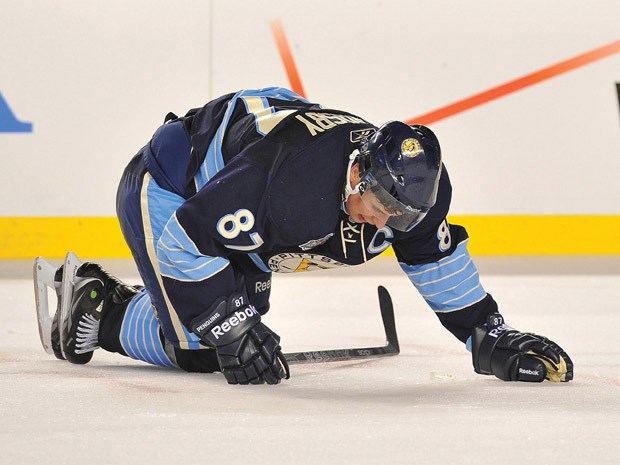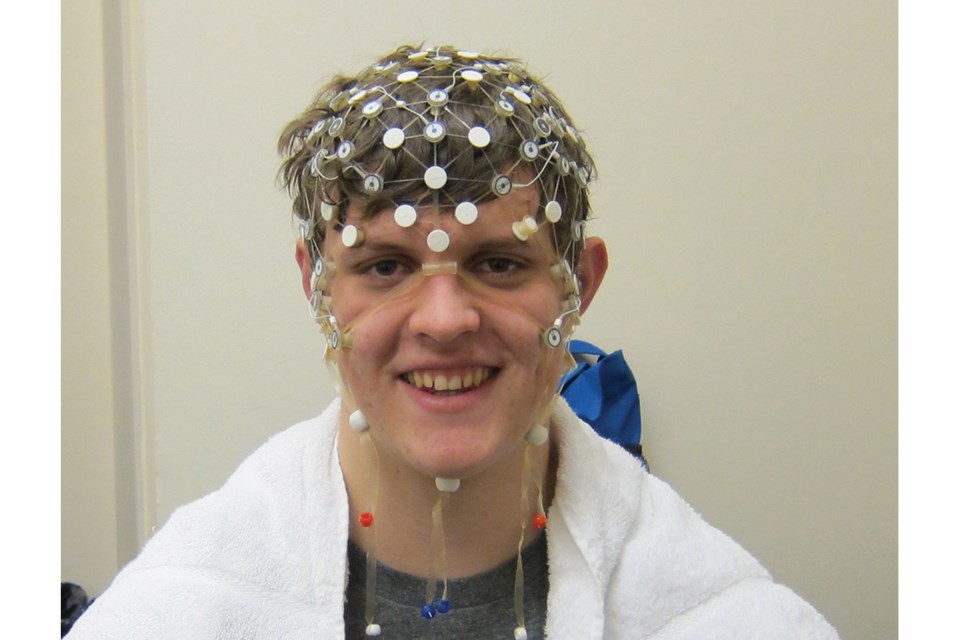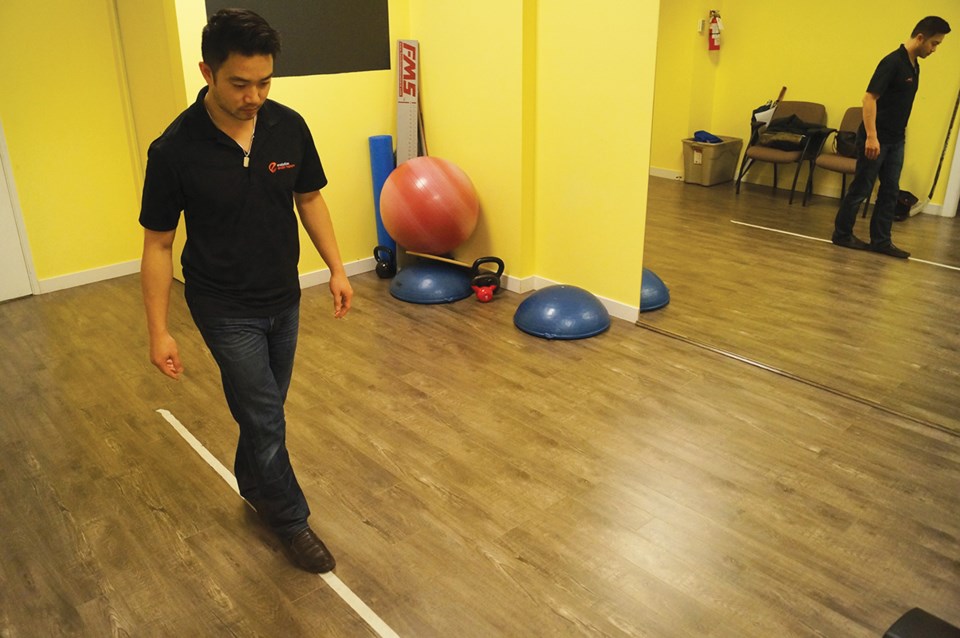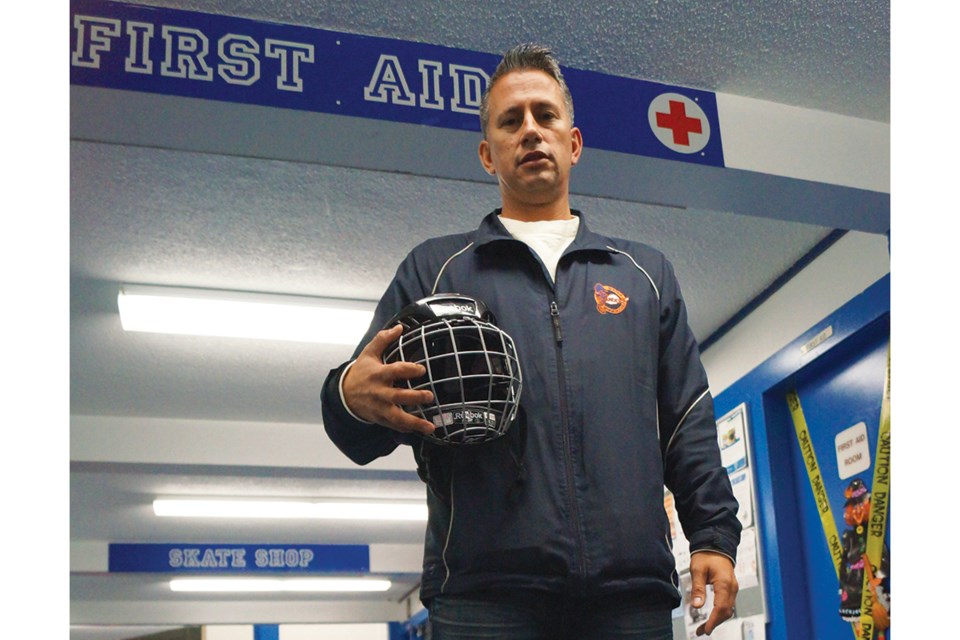Adolescents suffering from concussion-related symptoms take longer to recover than their adult counterparts and should not return to playing sports before fully returning to school, concluded scientists at the 2012 Zurich International Conference on Concussion in Sport.
But while concussions have garnered significant attention over the past few years, Canadian amateur sports associations have yet to adopt a consensus on “return to learn” protocol for children.
However, Seafair Minor Hockey Association in Richmond B.C. is leading the way by implementing its own protocol for recovering athletes, and it’s hoping the Richmond School District becomes a major stakeholder in the initiative.
Seafair leads the way
Seafair’s vice-president Cody Kusch has reached out to some of the province’s top doctors and neuroscientists to stage a return to learn program that involves annual, baseline testing for its 800-plus players to safely get back on the ice (for ages five and up).
Kusch is forcing his players to be healthy at school before being healthy on the ice.
“We’re not waiting for this mandate to come down. We can’t stop the players from getting a concussion, but we can make sure they get back onto the ice in a safe way,” said Kusch, who believes Seafair is the only association doing this in Canada. Since September 2013, 27 Seafair Islanders have been diagnosed with concussions.
Concussions occur when the brain is shaken and hits the skull by way of a hit to the head or a simple jolt of the body. This causes biochemical changes that produce symptoms such as headaches, dizziness, blurred vision and cognitive impairment.
Most concussions are resolved after one week.
But new research indicates microstructural damage occurs as well, according to Dr. Paul Korn, a pediatrician who is working with Seafair to help players.
“You don’t have a person who’s had a concussion return to play in a blink of an eye. By the same token, you don’t have a person who’s had a concussion going back and doing a complex math test before acclimatizing them to a learning process, allowing the brain to recover,” noted Korn.
“Returning to learn has to be the priority,” added Korn.
He said research has found that those athletes who don’t recover completely from a concussion are more likely to suffer a second concussion in the same year and/or they may face greater brain damage.
That’s what he suspects happened to Sidney Crosby three years ago when he returned prematurely and subsequently suffered a second blow to the head.
“One’s ability to balance and predict the gameplay instinctively has been affected. You’re just not at the level where you think you are,” said Korn.
Notably, Korn’s research indicates girls have longer recovery times, for reasons unknown, to date.

Baseline test required
Before the season, Kusch has every Islander take a baseline cognitive test, known as a SCAT3, at Richmond’s Evolution Sports Therapy. If a child is concussed, subsequent baseline tests will show regressed self-awareness, balance, coordination and memory.
Concurrently, visits to a family physician and referrals to concussion experts, such as Korn, are set up for the young athlete.
Players then undergo a six-stage return to learn protocol mandated by Seafair (based on the Zurich findings) that must be completed before the six-stage “return to play” protocol — which has been widely accepted throughout sports — is completed.
Not all teachers onboard
During the process, academic work is increased gradually as to not overwhelm the student.
But Kusch says a knowledge gap exists amongst some teachers.
“There are some teachers and administrators who are very supportive and there are others who say if you don’t finish this exam or this activity by next week then you’re getting an ‘F.’ So that’s the challenge.”
District spokesperson David Sadler said the district has not heard of return to learn protocols from the Ministry of Education.
Kusch is hoping a bottom-up approach will bring the district in as a major stakeholder of its protocol sometime next year.
“There is hard evidence that kids shouldn’t return to a learning environment just like they shouldn’t return to a playing environment because they have a brain injury. …I shouldn’t say I know (the district) will accept it, but they would be stupid not to,” said Kusch, a certified, but non-practicing teacher.
The problem isn’t just with kids playing in sports outside of school.
Richmond resident Vicky Forsyth’s son, Connor, was concussed nearly three years ago on a school skiing trip.
“It wasn’t a great situation in some ways; the way the injury was managed.”
While Connor, then in Grade 9, faced an uphill battle to recover, his mother, a physical therapist with working knowledge of concussion recovery, had to fight one teacher to implement her own return to learn program.
“If he tried to read or do anything for a long period of time, he was definitely having a hard time, headaches and so on. …Most of the teachers were really good and on board, but there was one teacher in particular who was very challenging by asking Connor to make up missed tests, despite doctor notes saying he shouldn’t be taking tests.”
Most parents clueless
Connor was lucky to have a mother with a background in concussion therapy. The vast majority of parents don’t have a clue as to what to do, according to Kusch, which makes Seafair’s program that much more important.
Larry Hurst, a principal at DeBeck elementary, has his son Hayden playing Bantam (Grades 8 and 9) rep hockey.
Hayden suffered a concussion and is currently going through Seafair’s innovative protocol.
“The return to learn (protocol) is certainly something schools are interested in, partnering with families dealing with concussions,” said Hurst.
“If we didn’t have that information we may have felt he was ready to return to play earlier than he should have.
“You can’t see what’s going on inside his head, so having that was really helpful.”
Hayden is now part of a concussion study being conducted at the Centre for Brain Health at the University of B.C.
There, neuroscientist Dr. Naznin Virji-Babul is studying how the teenage brain responds to concussion and whether baseline testing in kids is helpful in understanding the changes that occur after a concussion.
Brain still a mystery
While concussions have seemingly come into the social spotlight, especially with Crosby’s injury, concussion research is still relatively new. Even the baseline tests (SCAT3) and management protocols undertaken by Kusch are relatively experimental, she notes.
“We know very little about what happens in the brain after a concussion. We know kids take longer than adults and that’s something we still need to understand,” said Virji-Babul.
With the ultimate goal of developing a clinical, diagnostic tool, Virji-Babul is hooking kids up to electroencephalography devices to read their brain activity during concussion rehab.
Virji-Babul has documented changes in the dorsal prefrontal cortex, at the front of the brain, which controls executive functions, such as memory, reasoning and planning — all things that are particularly important during teenage development.
She says a teen’s brain works harder to recover.
So far, she has seen 10 Seafair players, among many others, over the past two years.
Virji-Babul is even working with UBC’s engineering department to create a portable wireless device that reads brain signals from inside a hockey helmet to give up-to-the-minute updates on head impacts. That’s years away, she said.
But, for all her expertise and decades of experience, one problem persists.
“People are starting to change their mindset about what it’s like to have a concussion, but there are still others who are not taking it as seriously,” she said.
“The kids want to get back in the game and don’t necessarily want to tell you all their symptoms,” added Virji-Babul.

Kids may hide the truth
Part of the reason why SCAT3 baseline tests aren’t evidence-based is because they depend on the honesty of the player, as well as the parents, who are the ultimate observers of their child’s mental progression.
Athletic therapist Jonathan Sun runs the baseline testing for Seafair each September.
It’s laborious work, said Sun, which in itself is controversial in the medical field.
Sun says the whole protocol ultimately comes down to honesty.
“Ultimately, it’s up to the kid and the parents to be honest about how they’re feeling. Kids who understand the ramifications of continuing to play with concussions is getting better,” he said.
But, the promise of the big leagues may still lead young athletes to lie.
“No one wants a documented concussion on their record heading into the (junior) draft,” said Sun.

Chain breaks down
He also noted family physicians play a key role.
“We try our best, but the chain breaks down. Having a good family doctor who errs on the side of caution will help,” he said, adding he believes most general practitioners lack a solid understanding of concussion recovery.
Sun said while Seafair is being proactive, it will take major stakeholders getting together to iron out the return to learn protocols.
Because Kusch has instituted his own return to learn protocol (assisted by the BC Injury Research and Prevention Unit), which must precede the more established return to play protocol, he wants all teachers to understand the ramifications.
“They’re leaving it up to the family, which is no different from where we were with concussion management in hockey,” said Kusch.
The stakes are high, according to pediatrician Korn.
“You can have one concussion …and be having significant learning difficulties and significant physical symptoms related to the concussion that can last months. I’m not sure if anyone should go back to a high impact sport if it lasts for several months,” said Korn.
Seafair’s program still faces uphill hurdles, notably with the baseline tests, honest responses from players and parents, buy-in within the schools (and even coaches) and logistical challenges, including timely access to the medical system.
Another challenge is how Hockey Canada, the sport’s governing body, manages gameplay and how this may affect the rate of concussions.
For instance, if you eliminate hitting — as it’s been for elementary aged players — the speed of the game increases, leading to more incidental contact, said Kusch.
The jury is out on the right course of action and it may always be out, as the dynamics and understanding of concussions evolve, noted Kusch.
And yet, another jury may come into play — at the courthouse.
Kusch says a recent $765 million settlement between the NFL and concussed football players and heightened protocols by the NHL serve as a warning to minor sport associations.
“If we sit on our (butts) we’re just as much to blame,” said Kusch, who warns of impending lawsuits coming out in public.
It’s ever the more reason for government, schools, doctors, parents and players to get on board with effective concussion management.



